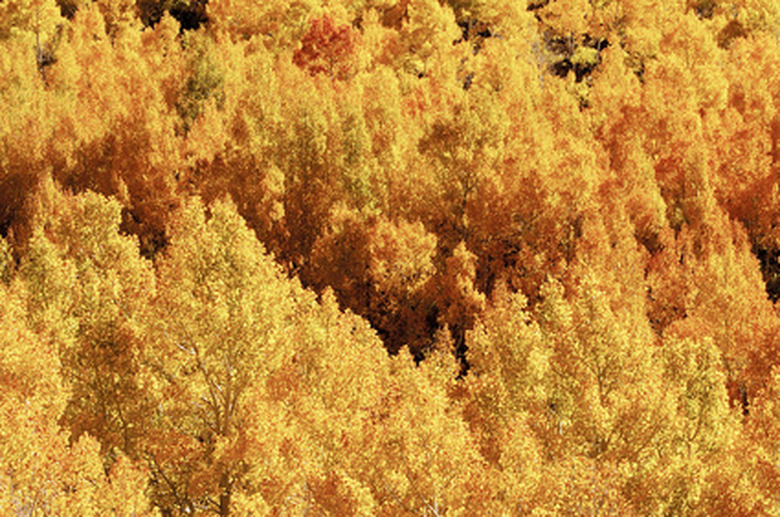How To Identify Aspen Trees
The quaking aspen grows from Maine to Alaska and in many portions of the American West. It is a member of the poplar family, and its scientific name, Populus tremuloides, can give some indication of one of its characteristics, even if you do not know Latin. Unfortunately, the quaking aspen is subject to many diseases and insect invaders that shorten the lifespan of this attractive species. Go out in the woods today and look, and listen, to identify this tree.
Step 1
Look for a tree that seems to have shimmering leaves. The long, flat stems and rounded shape of the quaking aspen's 3-inch-wide leaves combine to create foliage that will rustle even in a light breeze. The silvery lower surfaces of foliage are a sharp contrast to the dark green upper surfaces, giving the tree a shimmering effect when the wind blows.
- The quaking aspen grows from Maine to Alaska and in many portions of the American West.
- The long, flat stems and rounded shape of the quaking aspen's 3-inch-wide leaves combine to create foliage that will rustle even in a light breeze.
Step 2
Estimate the size of the tree. The quaking aspen does not attain great heights under normal circumstances; most reach 40 to 50 feet tall and have a 25-foot-wide spread of branches. The quaking aspen often has no branches on the lower trunk and grows straight and upright.
Step 3
Inspect the surrounding trees. In many cases, the quaking aspen will grow in pure stands of many trees. When you find one, you often find dozens growing side by side. This happens because aspens propagate through their root system, sending up virtual clones of themselves when conditions are right.
- Estimate the size of the tree.
- In many cases, the quaking aspen will grow in pure stands of many trees.
Step 4
Observe the bark. The white bark of the mature quaking aspen will feel smooth and bear scars where branches have come off. The bark on younger trees will be a silvery-gray or yellowish shade of gray.
References
- Ohio Department of Natural Resources: Quaking Aspen
- "National Audubon Society Field Guide to Trees;" Elbert Little; 2008
